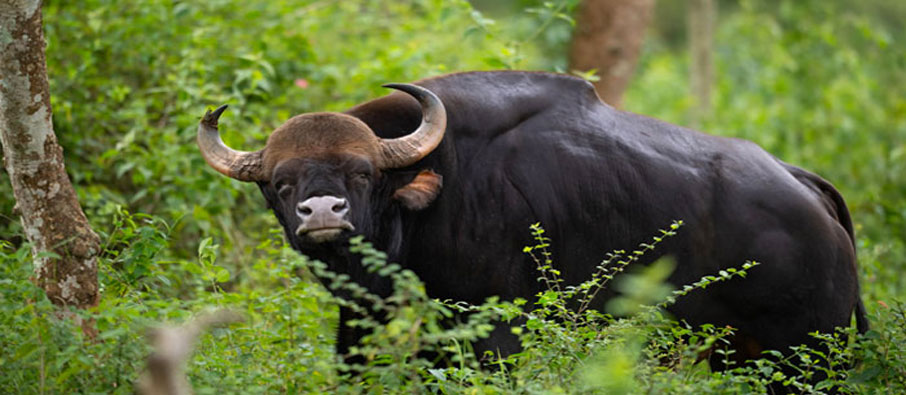Indian Bison (Gaur) of Tadoba National Park

The Indian Bison, also known as Gaur is only found in India at present and has been categorised as ‘Vulnerable’ on the IUCN List since 1986. This species belongs to the bovine breed and is the largest one in the family. Gaurs are indigenous to the South and Southeast parts of Asia. However, they are extinct in Bangladesh and Sri Lanka and now their only habitat is in India. The decrease in their population in the last three generations by 70% is a real matter of concern. Conservation measures have been taken to safeguard their population and fortunately, Tadoba National Park houses a healthy population of the Indian Bisons.
Tadoba National Park is located in the Chandrapura district of Maharashtra, predominantly celebrated for the dense population of Bengal Tigers. Tadoba has been declared a Tiger reserve in 1993 and is the first national park of Maharashtra. A popular haven for wildlife enthusiasts, Tadoba National Park derived its name from the Taru God, worshipped by the local tribes residing near Tadoba. There is a wide range of flora and fauna in Tadoba Andhari Tiger Reserve. Popular wildlife species found in the national park other than the Bengal tigers include - Indian leopards, Gaur, Sloth bears, Dhole, Nilgai, Small Indian Civet, Jungle Cats, Sambar, Spotted Deer, Barking Deer, Chital, Marsh Crocodile, Striped Hyena, Indian Cobra, Indian Python, Grey-headed Fish Eagle, Peacock, Crested Serpent Eagle, Wolf Spiders, Jewel Beetles, etc.
Physical Appearance of Indian Bison
The Gaur, also known as the Indian Bison, is a robust and powerful mammal. Due to its sturdy build-up, there are few animals of Gaurs. However, they might fall prey to dholes, leopards, crocodiles and tigers. Their foreheads are bulged out a little in the convex shape. The weight of a female adult Gaur can be somewhere between 400 kg - 1000 kg, whereas male adult Gaurs weigh between 600 kg - 1500 kg. With their massive weight, their height ranges between 170 cm to 230 cm. The length of the Indian Bison ranges between 240 cm to 340 cm, and its tail measures about 70 cm to 105 cm in length. Their tails are typically short, even shorter than that of an oxen. Both the male and female Indian bison possess horns that are yellowish brown or pale green in colour. Their horns are not positioned upright, rather they are curved like a C-shape with an inward curvature. They use their horns to protect or defend themselves from predators. They can even kill a tiger using their sharp and curved horns. Lastly, The colour of their eyes is brown. Talking about the newborns, the baby bisons are light golden yellow right after birth. Eventually, they turn light brown and then reddish brown as they grow up.
Characteristics or Social Behaviour of Indian Bison
Indian Bison are diurnal by nature that is they remain active during the daytime. They are usually known to be social animals and can be seen in herds of 8 to 10 gaurs. Indian bison are herbivores and they require large grazing grounds to cater to their huge appetite. The male Gaurs often involve in territorial disputes, as they freely venture into other’s territory. Their varied vocalisations symbolise different communication among them. They growl at a high pitch to alert their herd of any impending danger. During their mating season, they roar deeply to signal their mates. A male gaur usually mates with more than one female and frequently combats with other males to secure their female partners.
Life Cycle of Indian Bison
The life span of Gaurs on an average ranges between 25 to 30 years. The pregnancy period lasts for 9 months like human beings and they give birth to one calf at a time.